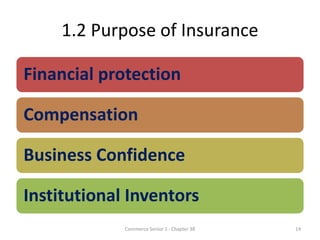The smart Trick of Pacific Prime That Nobody is Discussing
The smart Trick of Pacific Prime That Nobody is Discussing
Blog Article
Pacific Prime Fundamentals Explained
Table of ContentsA Biased View of Pacific PrimeThe Pacific Prime PDFsAll about Pacific PrimeAll about Pacific PrimeHow Pacific Prime can Save You Time, Stress, and Money.
:max_bytes(150000):strip_icc()/terms_i_insurance_FINAL_-3556393b3bbf483e9bc8ad9b707641e4.jpg)
This is since the information were accumulated for a duration of solid economic efficiency. Of the approximated 42 million individuals who were uninsured, almost concerning 420,000 (regarding 1 percent) were under 65 years old, the age at which most Americans become eligible for Medicare; 32 million were adults in between ages 18 and 65, around 19 percent of all adults in this age; and 10 million were kids under 18 years old, about 13.9 percent of all kids (Mills, 2000).
These estimates of the variety of persons uninsured are created from the yearly March Supplement to the Existing Population Survey (CPS), performed by the Census Bureau. Unless or else noted, nationwide price quotes of people without medical insurance and percentages of the populace with various sort of insurance coverage are based on the CPS, one of the most extensively made use of resource of estimates of insurance protection and uninsurance rates.
All about Pacific Prime

Still, the CPS is especially helpful since it produces annual quotes fairly swiftly, reporting the previous year's insurance policy coverage estimates each September, and because it is the basis for a consistent set of estimates for greater than twenty years, permitting for evaluation of patterns in protection gradually. For these factors, in addition to the comprehensive use the CPS in other research studies of insurance policy protection that are offered in this record, we count on CPS quotes, with restrictions noted.

The quote of the number of without insurance people broadens when a population's insurance coverage status is More Help tracked for a number of years. Over a three-year period starting early in 1993, 72 million individuals, 29 percent of the U.S. https://pacificpr1me.wordpress.com/2024/04/03/pacific-prime-your-gateway-to-comprehensive-international-health-insurance-solutions/. populace, lacked protection for at the very least one month. Within a single year (1994 ), 53 million people experienced a minimum of a month without coverage (Bennefield, 1998a)
Six out of every ten without insurance grownups are themselves employed. Working does boost the chance that one and one's family participants will certainly have insurance, it is not an assurance. Even participants of households with two permanent breadwinner have almost a one-in-ten chance of being without insurance (9.1 percent uninsured rate) (Hoffman and Pohl, 2000).
Things about Pacific Prime
New immigrants represent a considerable percentage of people without medical insurance. One analysis has attributed a substantial portion of the recent development in the dimension of the united state without insurance population to immigrants who got here in the nation in between 1994 and 1998 (Camarota and Edwards, 2000). Recent immigrants (those who involved the United States within the previous four years) do have a high rate of being without insurance (46 percent), but they and their kids make up just 6 percent of those without insurance nationally (Holahan et al., 2001).
The connection in between medical insurance and access to care is well established, as recorded later on in this chapter. The relationship between health insurance policy and wellness end results is neither straight nor easy, an extensive clinical and wellness solutions study literary works links health insurance policy protection to enhanced access to care, better quality, and enhanced personal and population wellness standing.
Degrees of evaluation for checking out the results of uninsurance. This discussion of medical insurance coverage focuses mainly on the U.S. populace under age 65 since virtually all Americans 65 and older have Medicare or other public coverage. Additionally, it focuses especially on those without any type of health insurance coverage for any size of time.
The Buzz on Pacific Prime
The issues dealt with by the underinsured are in some respects similar to those dealt with by the without insurance, although they are typically less serious. Wellness insurance, however, is neither essential nor sufficient to gain accessibility to medical services. The independent and direct result of wellness insurance coverage on accessibility to health and wellness services is well established.
Others will get the healthcare they need even without wellness insurance policy, by spending for it out of pocket or seeking it from suppliers who offer treatment cost-free or at extremely subsidized rates. For still others, medical insurance alone does not guarantee invoice of care as a result of various other nonfinancial barriers, such as a lack of wellness care providers in their area, minimal access to transportation, illiteracy, or linguistic and social differences.
Some Ideas on Pacific Prime You Need To Know
Formal research study regarding uninsured populaces in the United States dates to the late 1920s and very early 1930s when the Committee on the Price of Medical Care produced a series of reports regarding funding physician office check outs and hospitalizations. This concern came to be salient as the numbers of clinically indigent climbed up throughout the Great Clinical depression.
Report this page